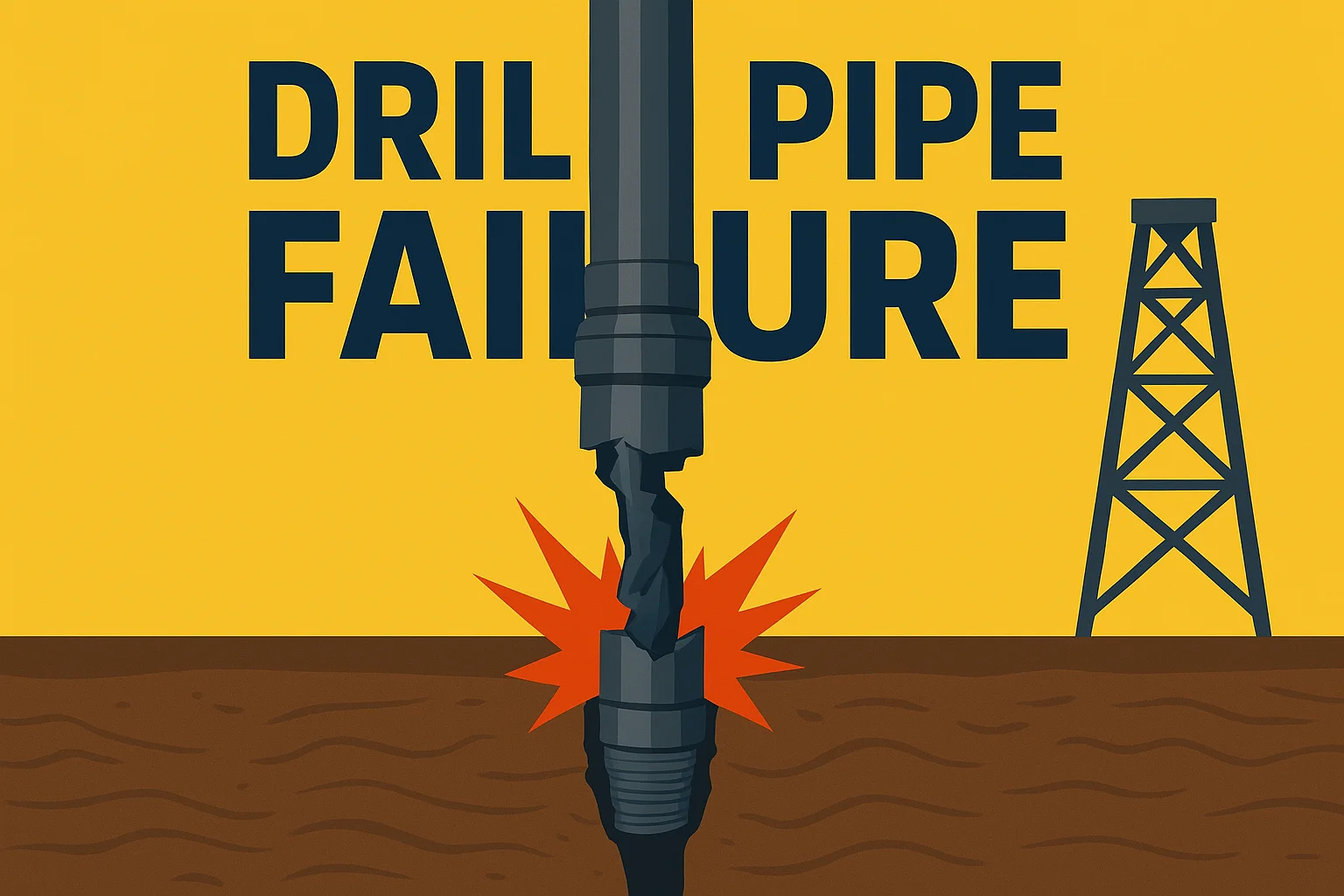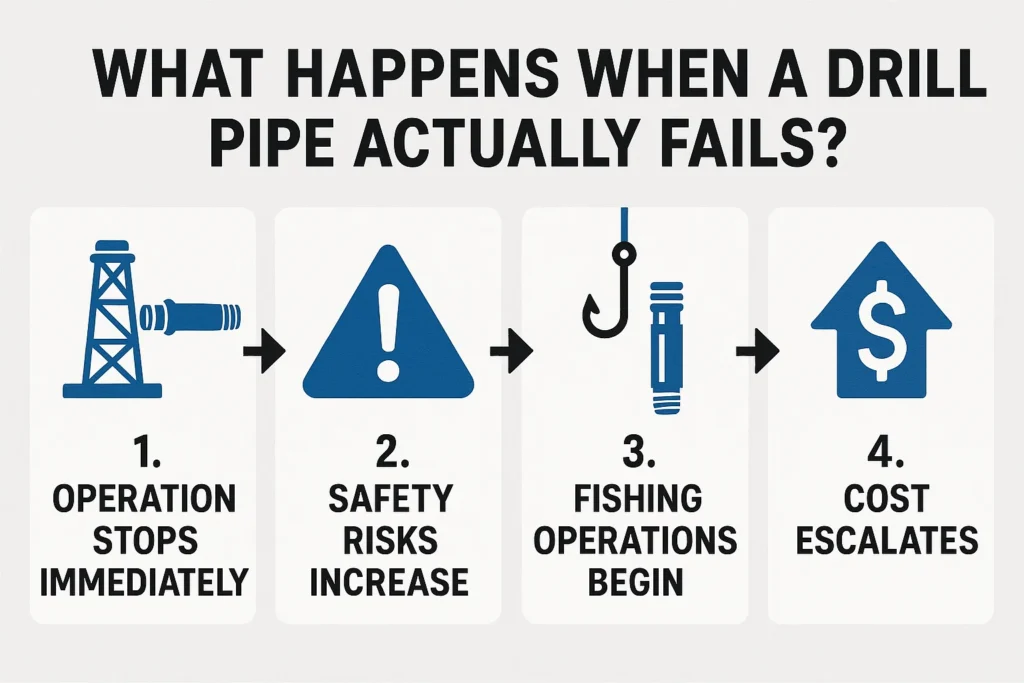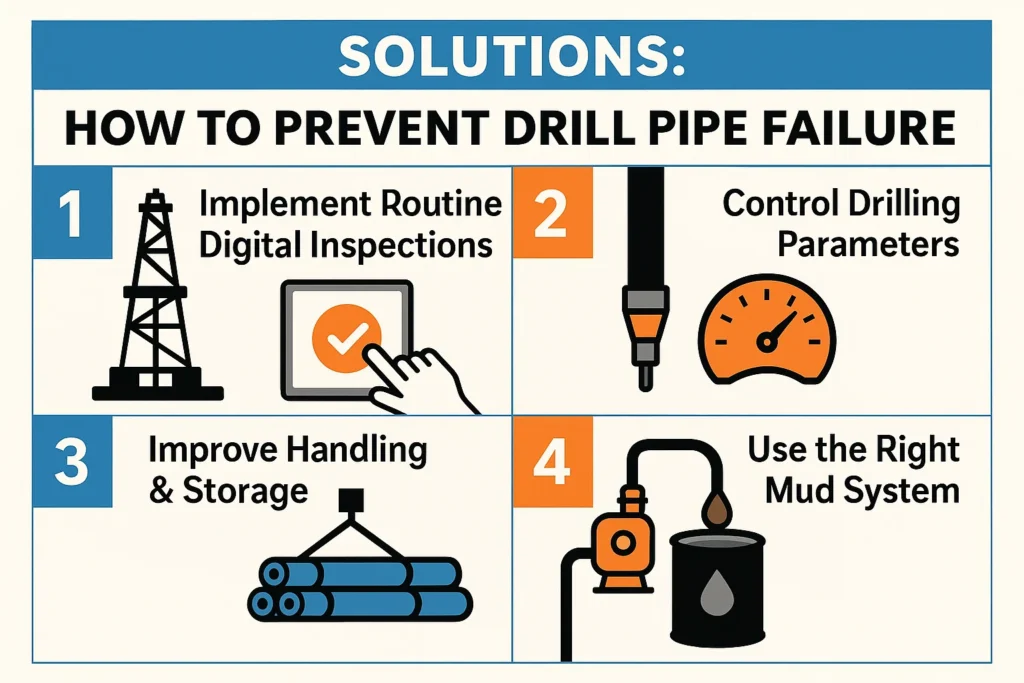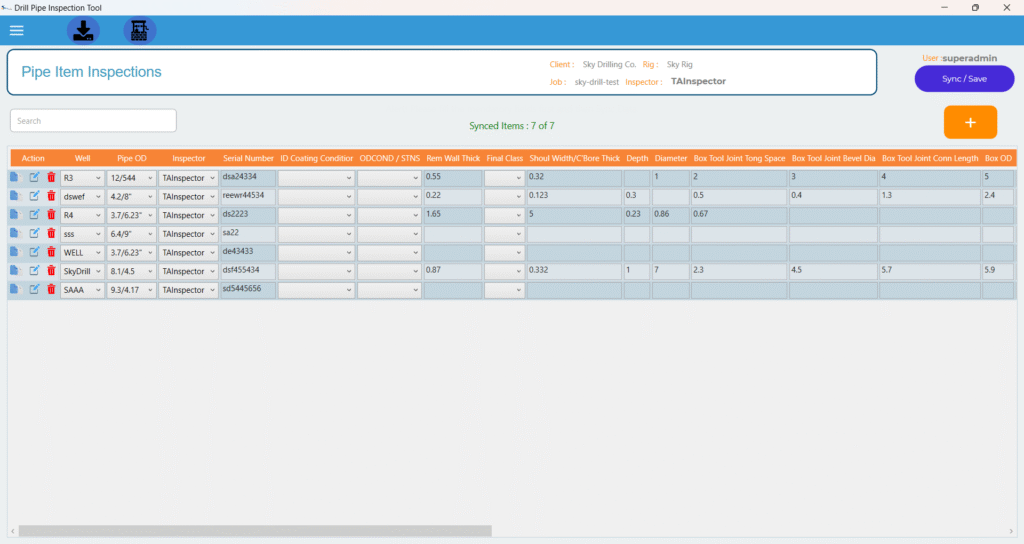Inspections Track Software For Oil and Gas Inspection Industry

Drill pipe failure is one of the costliest and most dangerous issues in the oil and gas industry. When a pipe fails, the entire drilling operation can stop instantly, leading to safety risks, equipment loss, and major downtime. Fortunately, understanding why drill pipes fail—and how to prevent it—helps companies stay ahead.
In this blog, we’ll break down the common causes, warning signs, preventive strategies, and the role of modern inspection tools like Inspections Track Software in avoiding catastrophic failures.
Drill pipes operate in extreme conditions. They face high torque, pressure, vibration, bending stress, corrosion and continuous mechanical fatigue. Even a small defect can turn into a major failure if it goes unnoticed.
Moreover, pipe failure can lead to:
Because of these risks, operators must track condition, loads, and inspections continuously.

Fatigue occurs when drill pipes undergo repeated cycles of stress. With each rotation and change in direction, the metal weakens.
Common triggers include:
How to prevent: continuous inspection, proper torque management, and fatigue tracking.
Drilling mud, high-chloride fluids, and seawater exposure gradually eat away at the pipe. This corrosion weakens the pipe body over time.
Leading corrosion types:
Solution: corrosion-resistant coatings, regular cleaning, and precise inspection reports.
Mechanical damage usually happens during handling, storage, or tripping.
It includes:
To reduce these issues, operators should implement strict handling procedures and automated inspection logs.
Although rare, drill pipes may fail due to flawed materials or improper heat treatment.
Common defects include:
This makes NDT inspections essential before deployment.
Exceeding pipe torque or tensile limits is a direct cause of sudden failures. When drilling teams do not follow recommended limits, pipe twist-offs or stretch failures can occur.

When a drill pipe fails, several events unfold quickly:
The drill string becomes stuck or separated, halting drilling operations.
Pressure imbalance or sudden release can lead to injuries, well control problems or near-misses.
A specialized team must retrieve the lost portion of the pipe from the wellbore.
NPT, equipment loss and additional crew hours drive up operational expenses.
Early detection is essential. Look out for:
Transitioning from traditional paper logs to digital inspection tools makes this tracking easier and more accurate.

Regular inspections are the first line of defense. Using platforms like Inspections Track Software, companies can:
This ensures that no warning signs are missed.
Following recommended torque and tension values plays a major role in preventing failures. Drilling engineers must monitor:
Using automated analytics further reduces human error.
Proper storage, cleaning and transportation help avoid accidental damage. Using padded racks, good lifting tools and corrosion inhibitors can extend pipe life significantly.
Because drilling fluids heavily influence corrosion and wear, choosing the right fluid chemistry directly impacts pipe health. Supervisors should frequently test mud chloride levels, pH and contaminants.
| Failure Type | Causes | Prevention Strategy |
|---|---|---|
| Fatigue | Repeated stress cycles | Fatigue monitoring, pipe rotation, digital inspection logs |
| Corrosion | Fluids, mud, chemicals | Coatings, clean water flushes, corrosion inhibitors |
| Mechanical Damage | Handling mistakes | Trained staff, proper handling tools, automated tracking |
| Manufacturing Defects | Welding or material issues | Thorough NDT checks, certification reviews |
| Over-Torque | Exceeding limits | Proper surface monitoring, torque control systems |
Inspections Track Software is designed specifically for the drilling and energy industry. It helps companies digitize and automate inspection workflows, ensuring drill pipe failures are caught early.
Key advantages include:

Because inspections become centralized and data-driven, maintenance decisions become faster and far more accurate.
Drill pipe failures are expensive, dangerous and disruptive. Yet, with the right inspection routine, data-driven decision-making and safe drilling practices, most failures are preventable. As the industry moves toward digital transformation, tools like Inspections Track Software play a vital role in reducing risks and ensuring that drilling operations stay efficient, safe and productive.
If you want to minimize failure risks, start by improving visibility—and digital inspections are the best way forward.
Read more : How to Do Fuel Oil Storage Tank Calibration and Tank Strapping?
The most common cause is fatigue, triggered by repeated stress cycles, bending, and high torque during drilling operations.
You can prevent corrosion by using the right drilling fluids, applying protective coatings, and performing regular digital inspections with tools like Inspections Track Software.
Typical warning signs include abnormal torque, excessive vibration, pressure fluctuations, and visible pipe wear or deformation.
Digital inspections ensure accurate tracking of pipe condition, fatigue cycles, and maintenance schedules, helping prevent failures and reduce costly downtime.

Keeping derricks safe is not optional—it’s a critical responsibility for every drilling operation. Because derrick structures face constant load, vibration, and extreme environments, even a minor oversight can lead to costly downtime or major safety…

Fuel oil storage tank calibration is one of the most critical tasks in the oil and gas industry. Accurate calibration ensures correct volume measurement, eliminates revenue loss, and maintains compliance with safety and metering standards….
SkySoft Connections provides quality IT services around the globe. Our services begin with experience and end with dedication, ensuring innovation and reliability
© Copyrights, 2024 All Rights Reserved Skysoftconnections
Contact us
Get notified about new articles